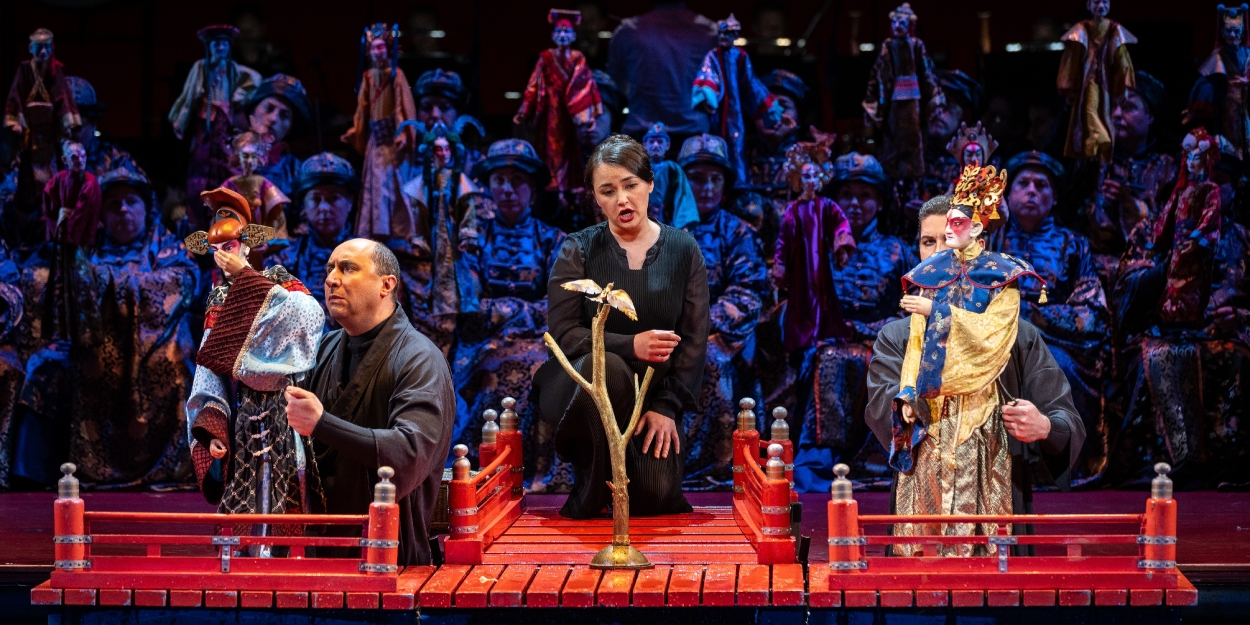Review: THE NIGHTINGALE AND OTHER FABLES – ADELAIDE FESTIVAL 2024 at Adelaide Festival Theatre, Adelaide Festival Centre
A wonderful evening of short works by Stravinsky.

Reviewed by Barry Lenny, Friday 1st March 2024.
The Nightingale and Other Fables is an evening of the works of Igor Fyodorovich Stravinsky (17th June 1882, Saint Petersburg – 6th April 1971, New York), all composed between 1911 and 1919, the first half of the performance being a diverse collection of short pieces, ending with The Fox (Renard), a burlesque tale from 1916, described as a chamber opera-ballet, and the second half devoted to his first opera, written between 1908 and 1913 and inspired by the Hans Christian Andersen fairy tale, The Emperor’s Nightingale.
This performance, first produced in 2009, is a co-production of Opera National de Lyon, Festival d’Aix-en-Provence, Canadian Opera Company, and Dutch National Opera, in collaboration with Ex Machina (Canada).
The performances by all concerned are superb, but wait, there’s more. What did you expect, with the incredibly imaginative director, Robert Lepage, at the helm? The singers wear a range of Russian peasant and Chinese court-inspired costumes, and puppetry, of various types, is a central part of the performance. It is as visually rich as it is aurally.
The orchestra is onstage for this entire event as the orchestra pit has been converted into a deep pool of water across the front of the stage, used for The Nightingale, but more of that later. The singers use the section of stage between the orchestra and the pool, and two raised section either side of the stage, all decorated with a Chinese influence.
This was an evening of wonderful music, some instrumental, but mostly vocal, covering a diverse range of music. It began, showing the influence of jazz on the composer, with Ragtime (1918). Conductor, Alejo Pérez, leads eleven members of the Adelaide Symphony Orchestra, including a cimbalom, played by Joshua Webster, through this rhythmically difficult piece, acting as an overture.
Contralto, Meredith Arwady, is the first to sing, with Pribaoutki (1914) a cycle of four very short songs to texts by Alexander Afanasyev: Kornílo (Uncle Kornilo), Natashka (Little Natalie), Polkovnik (The Colonel), and Starets i zayats (The Old Man and the Hare). Her rich contralto voice greatly impressed.
Hand shadow puppetry, of a high order, added to the musical aspect, delighted the audience. Shadow work became a feature of the first half of the programme.
Soprano, Yuliya Pogrebnyak, then sings Two Poems of Konstantin Balmont (1911), with a wonderful lightness in her voice. Meredith Arwady returns with Berceuses du Chat (1916), cat lullabies, another cycle of four songs, the lyrics based on folk songs.
Four Russian Peasant Songs (1914-1917) brings Meran Bow, Eleanor Brasted, Victoria Coxhill, Gianna Guttilla, Kirsten Hardy, Sara Lambert, Fiona McArdle, Jessica Mills, Bronwyn Palmer, Courtney Turner, and Emma Woehle to the stage, and what a superb ensemble they are.
Dean Newcombe, a very talented clarinettist, appears at intervals playing the Three Pieces for Solo Clarinet Numbers 1, 2, and 3 (1919) with great skill. As he plays, the singers and musicians come and go, silently and unobtrusively, in the background.
Closing the first half is The Fox (1916). The original, full title of The Fox was The Fable of the Vixen, the Cock, the Cat, and the Ram. A burlesque for the stage with singing and music. Two tenors, Andrew Goodwin and Owen McCausland, sing the roles of the rooster and the fox, while two basses, Tarus Berezhansky and Nabil Suliman, sing the cat and the goat. The boastful, but foolish rooster is tricked twice by the cunning vixen, almost becoming her dinner, but is saved by his friends the cat and the goat, who eventually kill the fox.
The Four Singers bring the tale to life with enthusiastic performances, whilst acrobats, behind a screen, act out the roles of the four animals in projected shadows, adding humour to the piece. The superb work of the acrobats/puppeteers throughout the evening: Martin Vaillancourt (Captain), Andréanne Joubert, Desmond Osborne, Vincent Poliquin-Simms, Andrea Ciacci, Noam Markus, cannot be too highly praised.
After the interval, The Nightingale completes the evening. Yuliia Zasimova delights as the voice of the nightingale, her crystal-clear voice admirably suited to the role. This is where the puppetry is in full force. Singers also control the puppets, often more than half submerged in the waters of the stage-wide pool, reminiscent of Vietnamese water puppets seen near the banks of the River Torrens in Elder Park during an OzAsia Festival performance some years ago.
The puppet characters paddle their boats to and fro: a fisherman, Owen McCausland, Chinese court officials, Cook, Yuliya Pogrebnyak, Chamberlain, Nabil Suliman, and Bonze, Jud Arthur, as well as the Japanese envoys, Robert MacFarlane, Pelham Andrews, and Norbert Hohl, each of their puppets exquisitely dressed and skilfully manipulated. They serve, on land, the Emperor, who is sung by Taras Berezhansky (bass). Not only are all of the singers marvellous, but their puppetry skills have clearly been the result of much practice.
Meredith Arwady appears again, this time carrying the skull and providing the voice of a huge skeletal Death, hovering over the seriously ill Emperor, Spectres, Catherine Campbell, Rosie Hosking, Elizabeth McCall, Rachel McCall, Bronwyn Palmer, and Courtney Turner wait in attendance. Again, the puppeteers deserve mention, especially for the comedy added by the antics of the water dragons.
The Adelaide Symphony Orchestra, as always, was impeccable, and the State Opera of South Australia Chorus never fails to please. We are fortunate to have groups of such a high calibre here in Adelaide. The combined talents of Set Designer, Carl Fillion, Lighting Designer, Etienne Boucher, Costume and Makeup Designer, Mara Gottler, and Puppet Designer Martin Genest, create the magical world of The Nightingale.
The Adelaide Festival has brought so many memorable productions to Adelaide, and this is another that people will remember for a long time.
Reader Reviews

Videos

